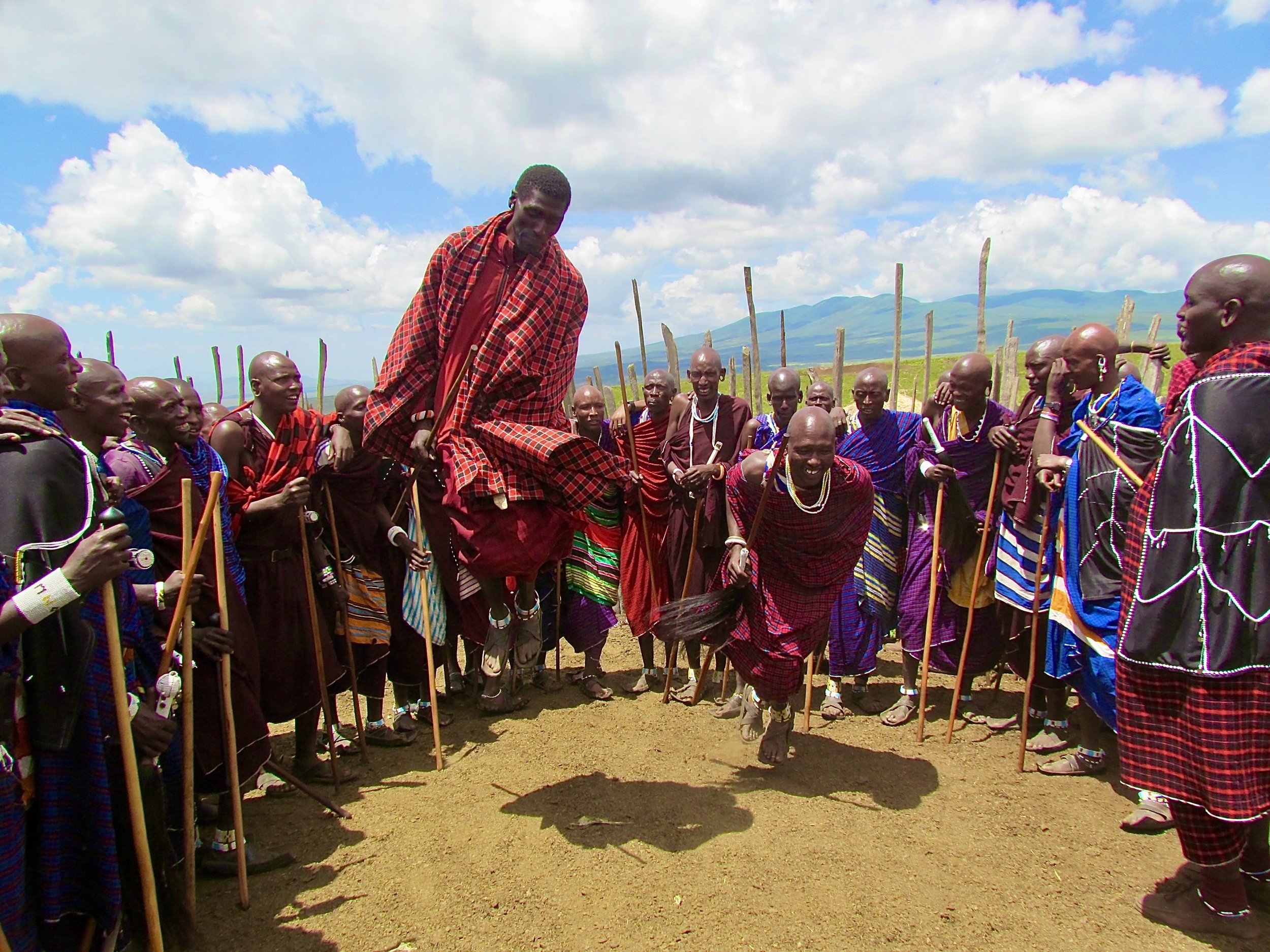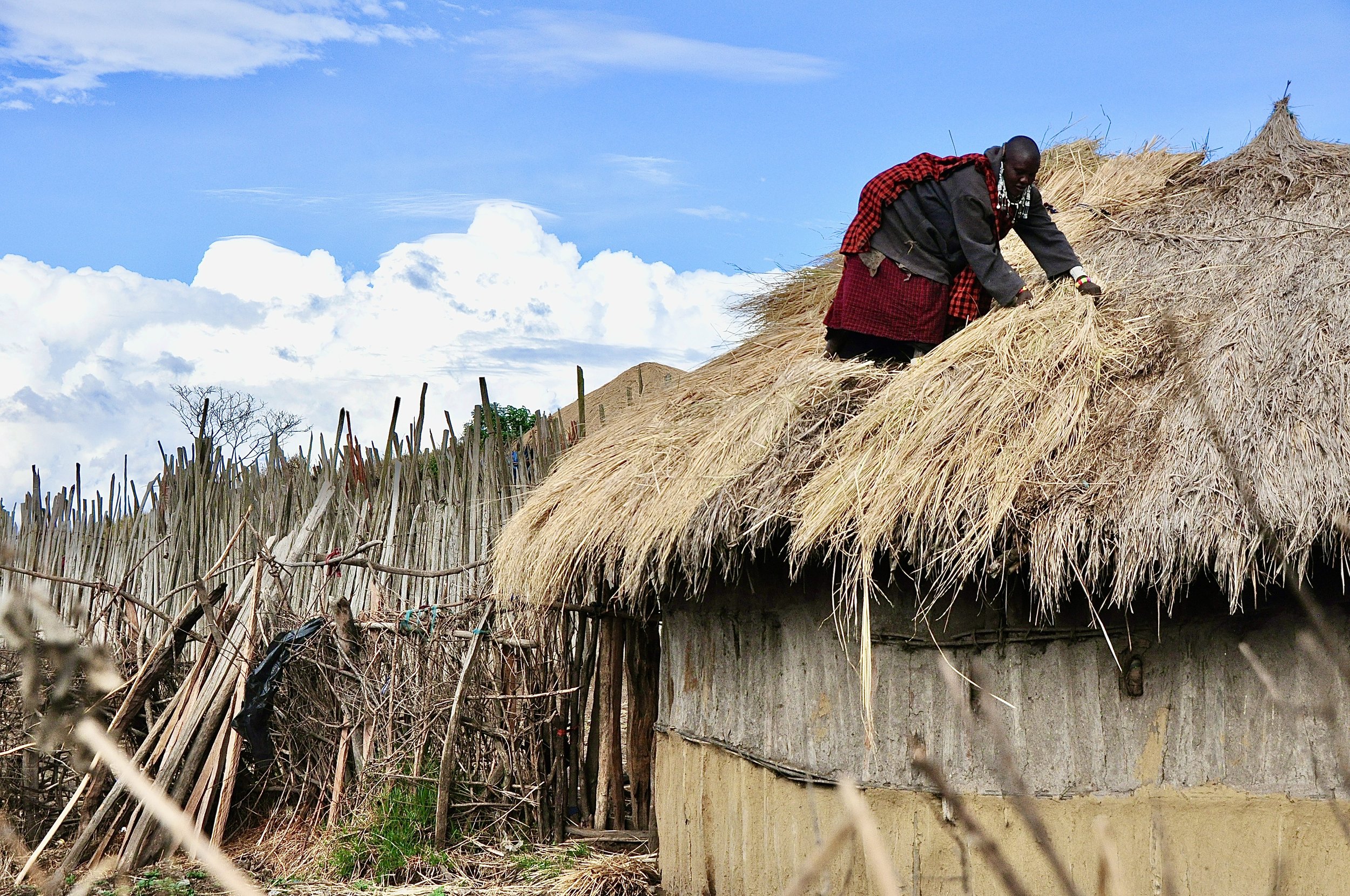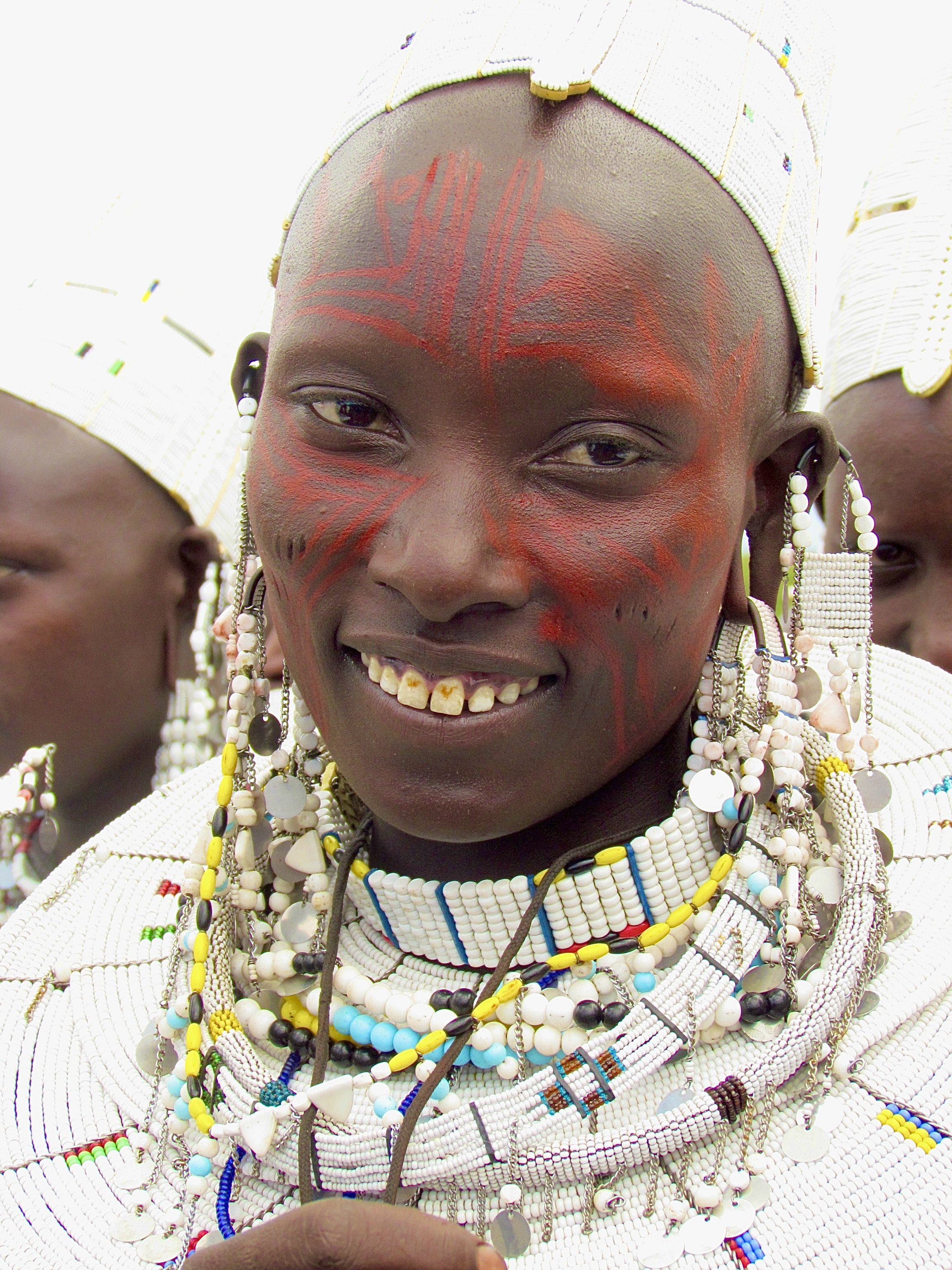
ABOUT THE MAASAI
The language of the Maasai is Maa, an oral language that historically has not been written
The Maasai are distinguished by their cultural dress, which characteristically consists of red, blue, or dark purple shukas (cloth) with either striped or plaid patterns, and white beaded jewelry. Red is the color most associated with the Maasai. Traditionally, the Maasai pierce and stretch their earlobes
Wealth is measured in terms of cattle, livestock, and children
Maasai children wear traditional shukas, or cloths, at a ceremony
The Maasai live in a boma, which is a circular arrangement of mud huts that typically include extended family, with wooden fencing around the perimeter and holding pens for cattle
Communities use traditional governance systems of tribal leadership, and the roles of village leaders are very important and held in high regard
Gender roles are strong in Maasai culture. Men herd and protect the livestock; women care for the children and the home, collect water and firewood, milk the cattle, and cook for the family. Women are also the ones to construct the homes (see photo to left)
Some Maasai men have multiple wives, but younger generations—especially those with higher education—are moving away from this tradition and taking only one wife
Typical boma in the Ngorongoro Conservation Area
A woman re-thatching her roof (women are responsible for constructing and maintaining their homes)
The Maasai are divided into age sets and have important ceremonies/rites of passage when each generation moves into a new grade, designating the start of a new stage of life. (These apply primarily to men; women take on the age-set of their husbands.) Young Maasai men in the warrior age set are often referenced by outsiders and used as a symbol of Maasai culture
Though education about female genital cutting and government bans of the practice have reduced the prevalence of it somewhat in Tanzania, it is still fairly widespread and regarded as a significant cultural ritual
Maasai women and men alike wear traditional beaded jewelry




